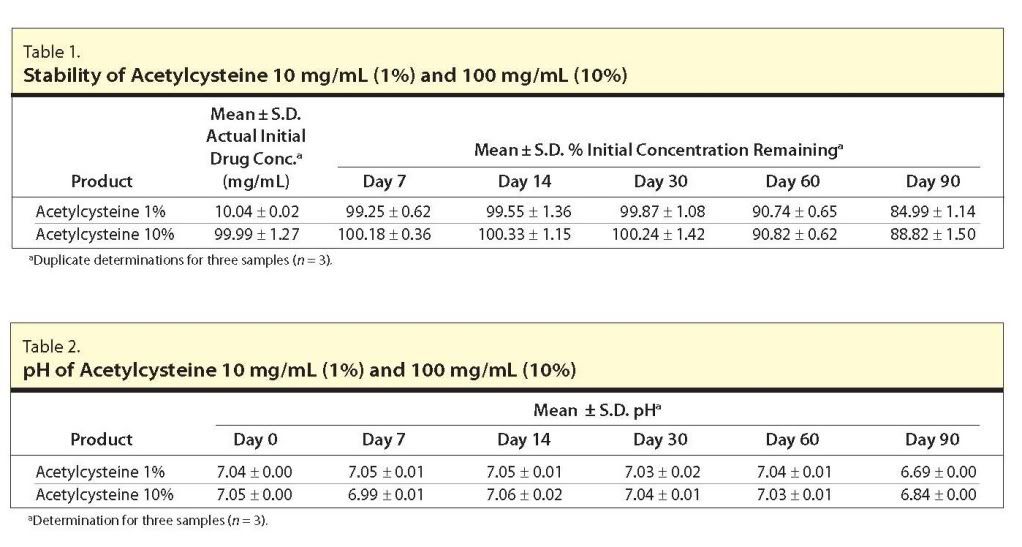Purpose: The stability of extemporaneously prepared acetylcysteine 1% and 10% solutions for treatment of meconium ileus was evaluated.
Methods: Acetylcysteine 1% (10-mg/mL) and 10% (100-mg/mL) solutions were prepared by mixing 3 and 10 mL, respectively, of commercially available 20% acetylcysteine solution with a sufficient quantity of bacteriostatic 0.9% sodium chloride for injection to make a final volume of 60 mL. Three identical samples of each concentration were prepared, placed in 2-oz amber plastic prescription bottles, and stored at 20-25 deg C. Samples were assayed in duplicate using high-performance liquid chromatography and inspected for changes in color, odor, and pH immediately after preparation and at 7, 14, 30, 60, and 90 days. Stability was defined as retention of at least 90% of the initial concentration.
Results: At least 90% of the initial concentration of acetylcysteine was retained in both formulations for 60 days. No appreciable change from the initial pH occurred in the acetylcysteine 1% or 10% solution during the first 60 days, but there was a notable change in pH after 90 days in both formulations. Neither solution was stable at day 90. There was no detectable change in color at 90 days; however, the odor of hydrogen sulfide was more pungent than on previous study days.
Conclusion: Extemporaneously prepared solutions of acetylcysteine 1% (10 mg/mL) and 10% (100 mg/mL) prepared with bacteriostatic 0.9% sodium chloride for injection were stable for at least 60 days when stored in plastic amber bottles at room temperature.






 留言列表
留言列表
 線上藥物查詢
線上藥物查詢 